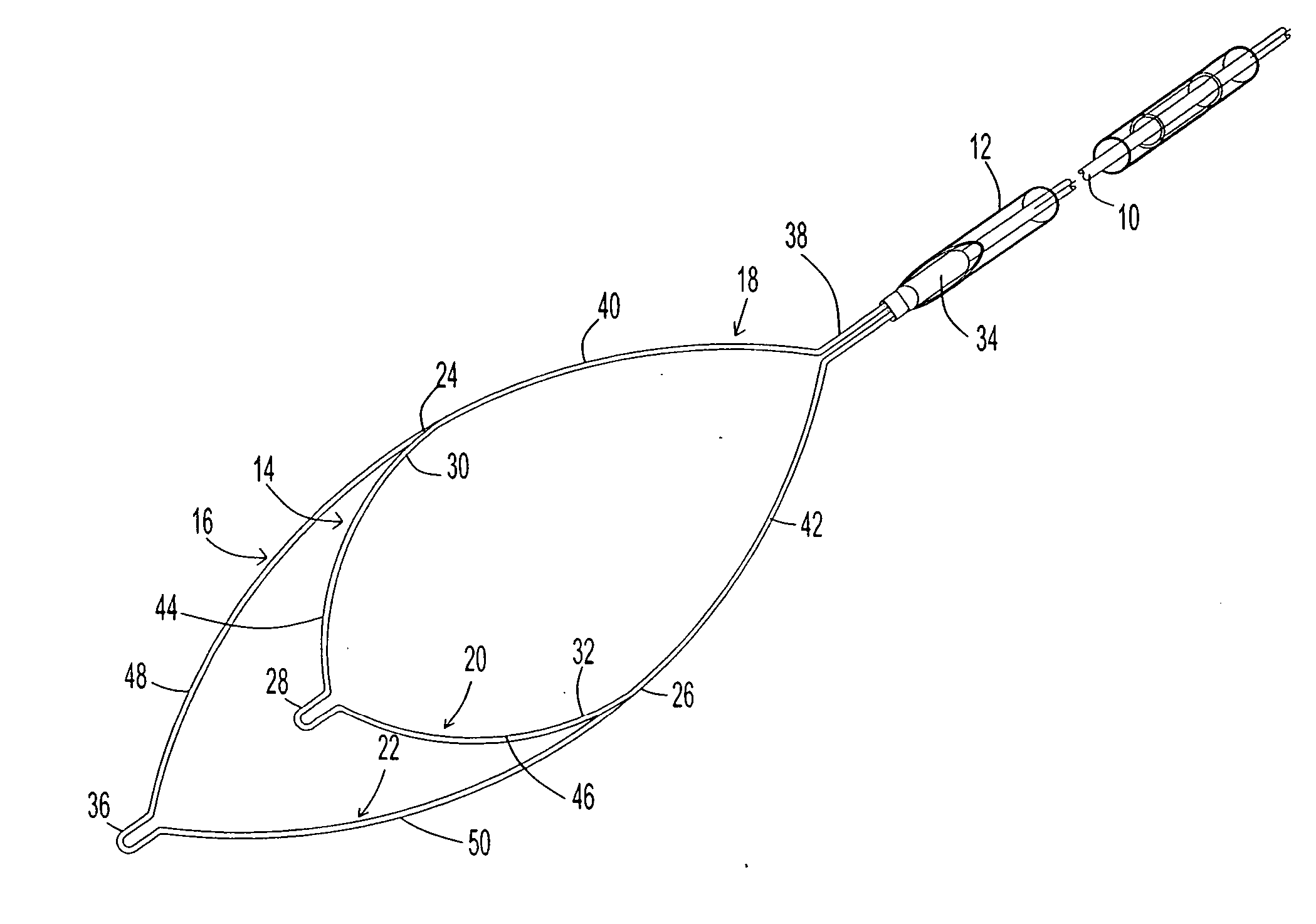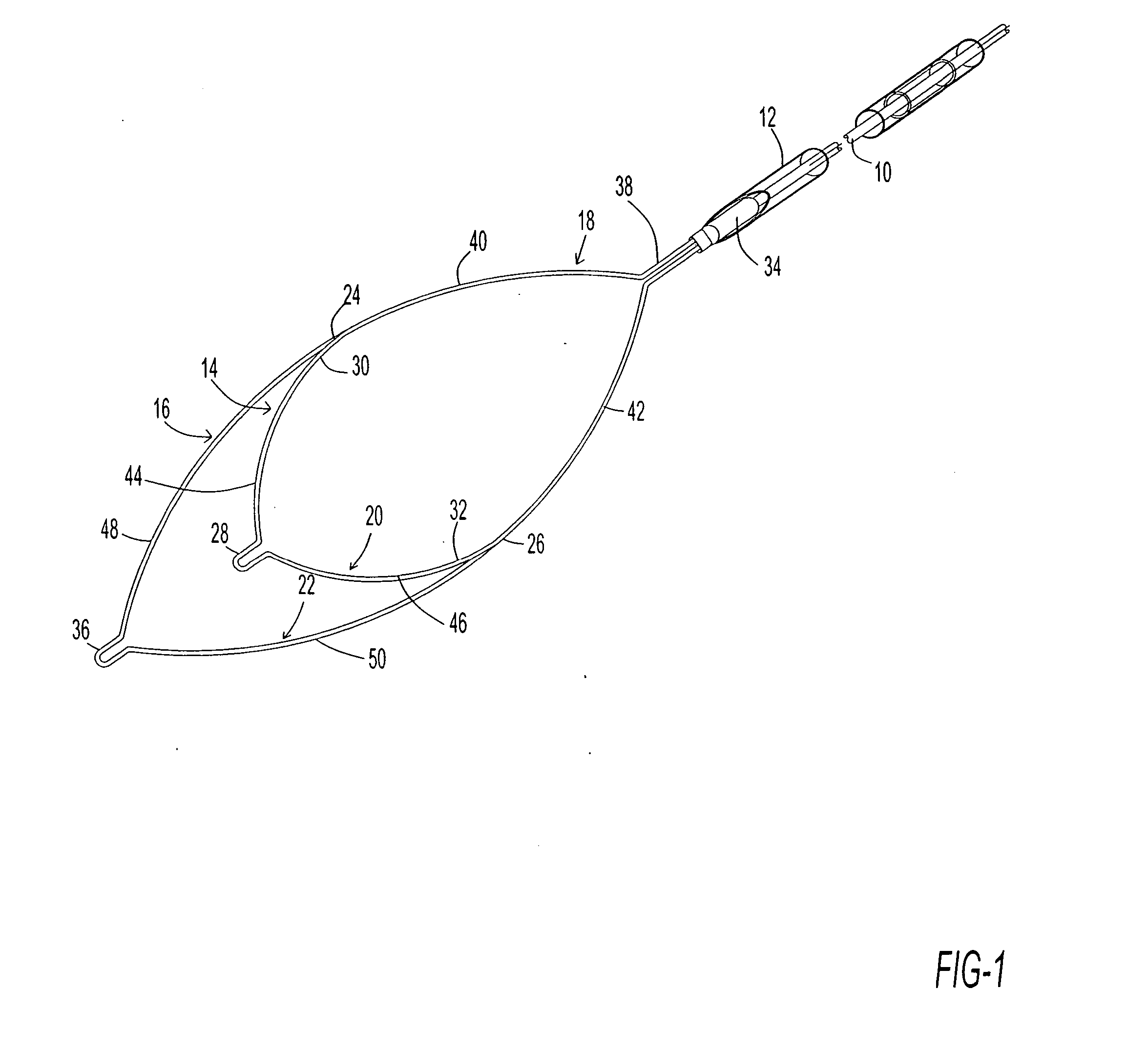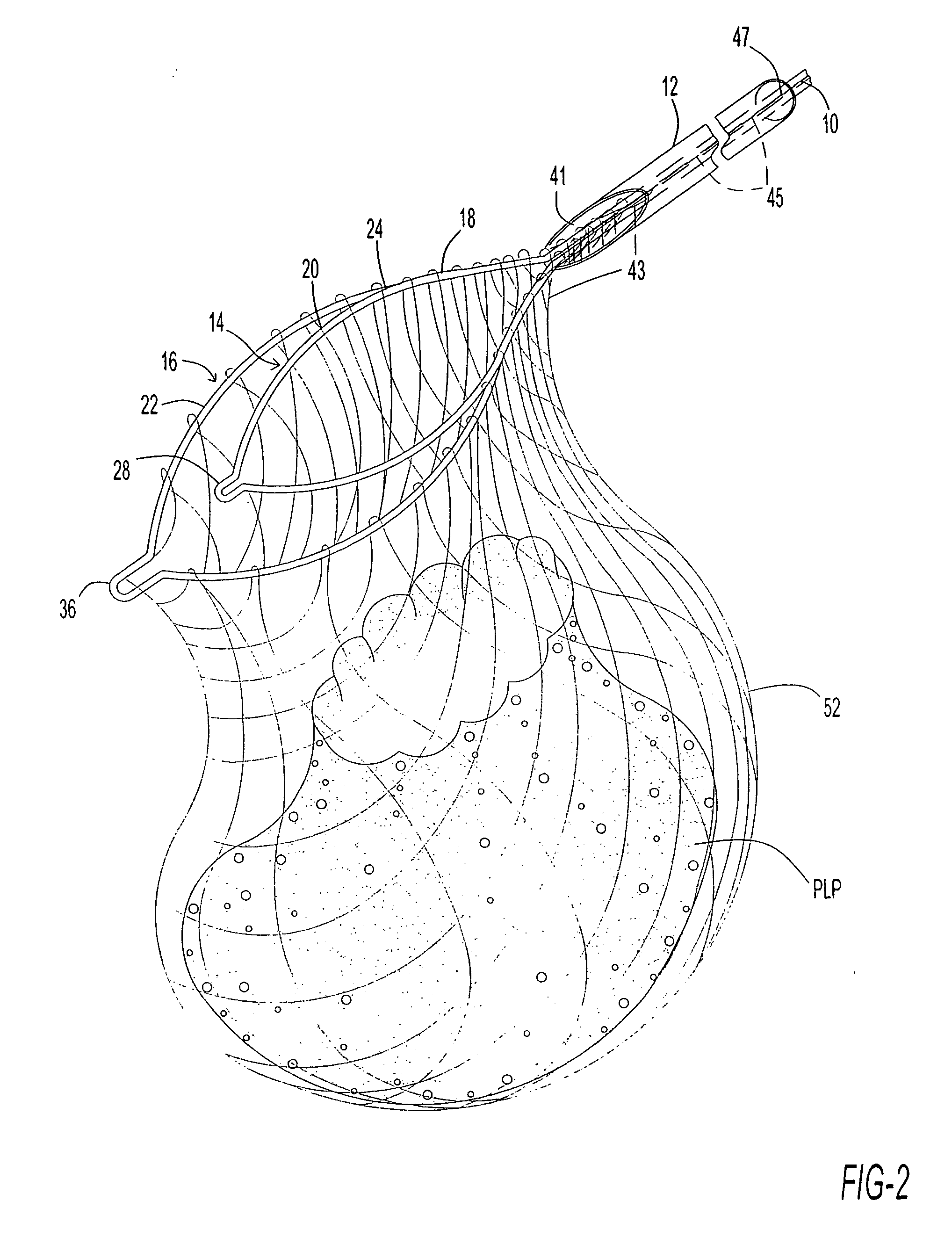Endoscope cutting and retrieving snare instrument
a technology for snare instruments and endoscopes, which is applied in the field of surgical instruments, can solve the problems of difficult capture of polyps and patient retrieval, frequent preventing visual inspection of patient internal tissues, and drawbacks of suction
- Summary
- Abstract
- Description
- Claims
- Application Information
AI Technical Summary
Benefits of technology
Problems solved by technology
Method used
Image
Examples
Embodiment Construction
[0034] As depicted in FIG. 1, a surgical instrument for use in an endoscopic tissue resection procedure comprises an elongate electrically conductive slider member or pusher wire 10 movably extending through a tubular introducer member 12 such as a catheter. The catheter is dimensioned to fit down the biopsy channel of a flexible endoscope. The instrument of FIG. 1 additionally comprises an inner loop 14 and an outer loop 16 both operatively connected to a distal end of wire 10. Inner loop 14 and the outer loop 16 have a common proximal loop portion 18 and different distal loop portions 20 and 22. The distal loop portion 22 of outer loop 16 is longer than the distal loop portion 20 of inner loop 14 with the result that the outer loop is larger than the inner loop.
[0035] At its proximal end (not shown), wire 10 is operatively connectable to a voltage source (not shown) for purposes of conducting current through inner loop 14. Distal loop portion 22 of outer loop 16 is preferably pro...
PUM
 Login to View More
Login to View More Abstract
Description
Claims
Application Information
 Login to View More
Login to View More - R&D
- Intellectual Property
- Life Sciences
- Materials
- Tech Scout
- Unparalleled Data Quality
- Higher Quality Content
- 60% Fewer Hallucinations
Browse by: Latest US Patents, China's latest patents, Technical Efficacy Thesaurus, Application Domain, Technology Topic, Popular Technical Reports.
© 2025 PatSnap. All rights reserved.Legal|Privacy policy|Modern Slavery Act Transparency Statement|Sitemap|About US| Contact US: help@patsnap.com



